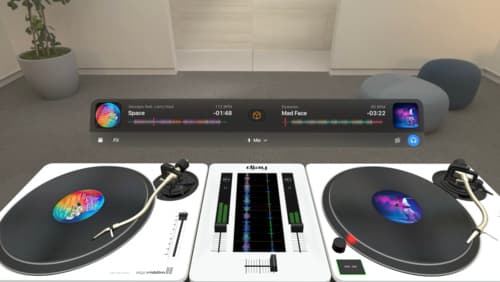how do I create both and android and ios app?
Asked on 2024-07-31
1 search
To create both an Android and iOS app, you would typically need to use a cross-platform development framework or develop each app natively for its respective platform. However, the context provided focuses on developing apps for Apple platforms. Here are some key points and sessions from WWDC that can help you with developing apps for iOS and other Apple platforms:
-
Using Xcode for Multi-Device Projects:
- Xcode allows you to target all Apple devices uniformly while still allowing for customization when needed. This is particularly useful for games, as they typically use a common codebase and share most of their project settings across all destinations. You can set up a multi-device project that targets both macOS and iOS devices. This setup ensures that both macOS and iOS can access the full capabilities of their respective SDKs when necessary.
- Port advanced games to Apple platforms
-
SwiftUI for Cross-Platform Development:
- SwiftUI is a powerful tool for building user interfaces across all Apple platforms. Once you have a user interface built using SwiftUI for one platform, you have an excellent start to bringing that UI to any other Apple platform. SwiftUI enables code sharing and provides adaptive views and scenes that offer an idiomatic look and feel on any Apple platform.
- SwiftUI essentials
-
Cloud Saves for Seamless Multi-Device Experience:
- For games, you can keep the game state synchronized across all your players' devices using cloud saves. This allows players to continue their progress on different devices seamlessly.
- Port advanced games to Apple platforms
-
Native SDKs for Best Performance:
- Using Apple's native SDKs directly provides the fastest possible performance and the best integration with Apple's hardware and software. This is crucial for building highly integrated apps that feel like natural extensions of the user's device.
- Platforms State of the Union
For developing the Android version of your app, you would typically use Android Studio and Kotlin or Java. Cross-platform frameworks like Flutter, React Native, or Xamarin can also be used to develop apps for both iOS and Android from a single codebase.
Relevant Sessions:
If you need more specific guidance on any of these topics, feel free to ask!

SwiftUI essentials
Join us on a tour of SwiftUI, Apple’s declarative user interface framework. Learn essential concepts for building apps in SwiftUI, like views, state variables, and layout. Discover the breadth of APIs for building fully featured experiences and crafting unique custom components. Whether you’re brand new to SwiftUI or an experienced developer, you’ll learn how to take advantage of what SwiftUI has to offer when building great apps.

Bring your iOS or iPadOS game to visionOS
Discover how to transform your iOS or iPadOS game into a uniquely visionOS experience. Increase the immersion (and fun factor!) with a 3D frame or an immersive background. And invite players further into your world by adding depth to the window with stereoscopy or head tracking.

Design great visionOS apps
Find out how to create compelling spatial computing apps by embracing immersion, designing for eyes and hands, and taking advantage of depth, scale, and space. We’ll share several examples of great visionOS apps and explore how their designers approached creating new experiences for the platform.
